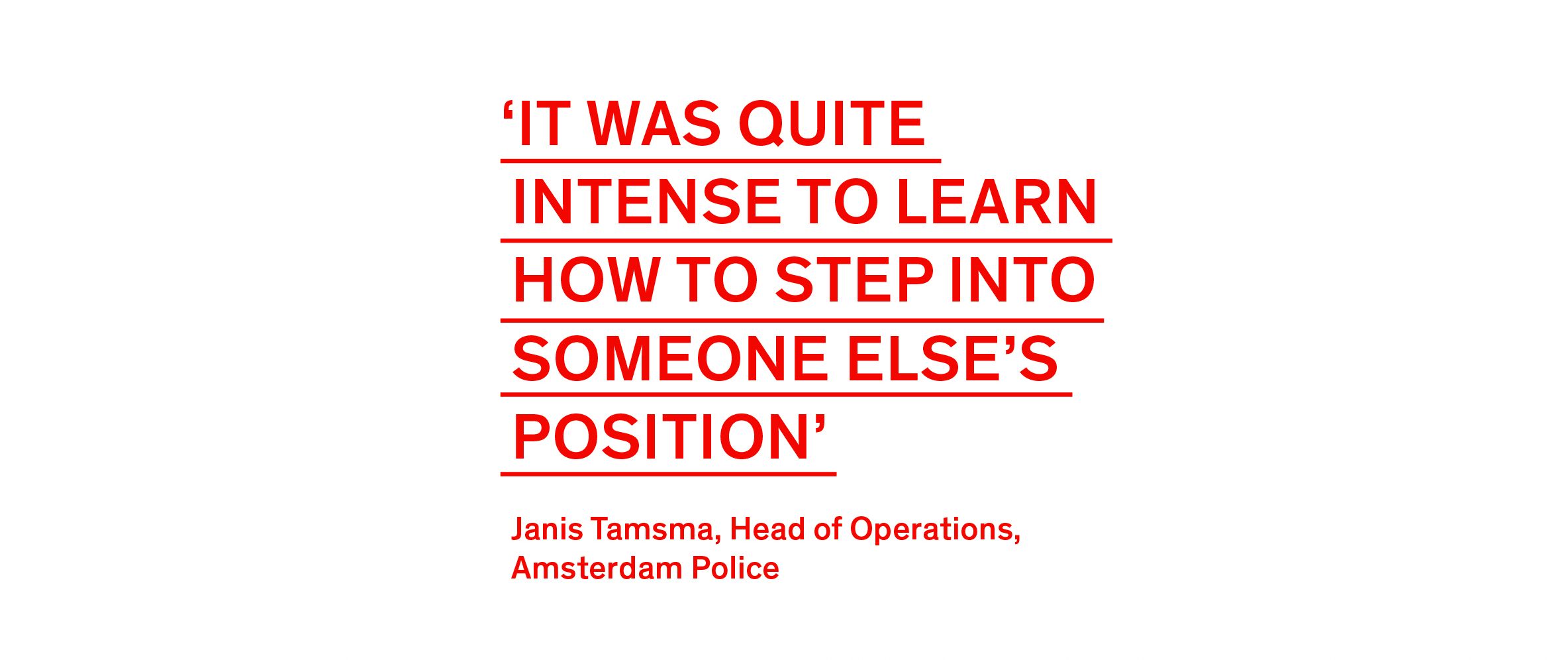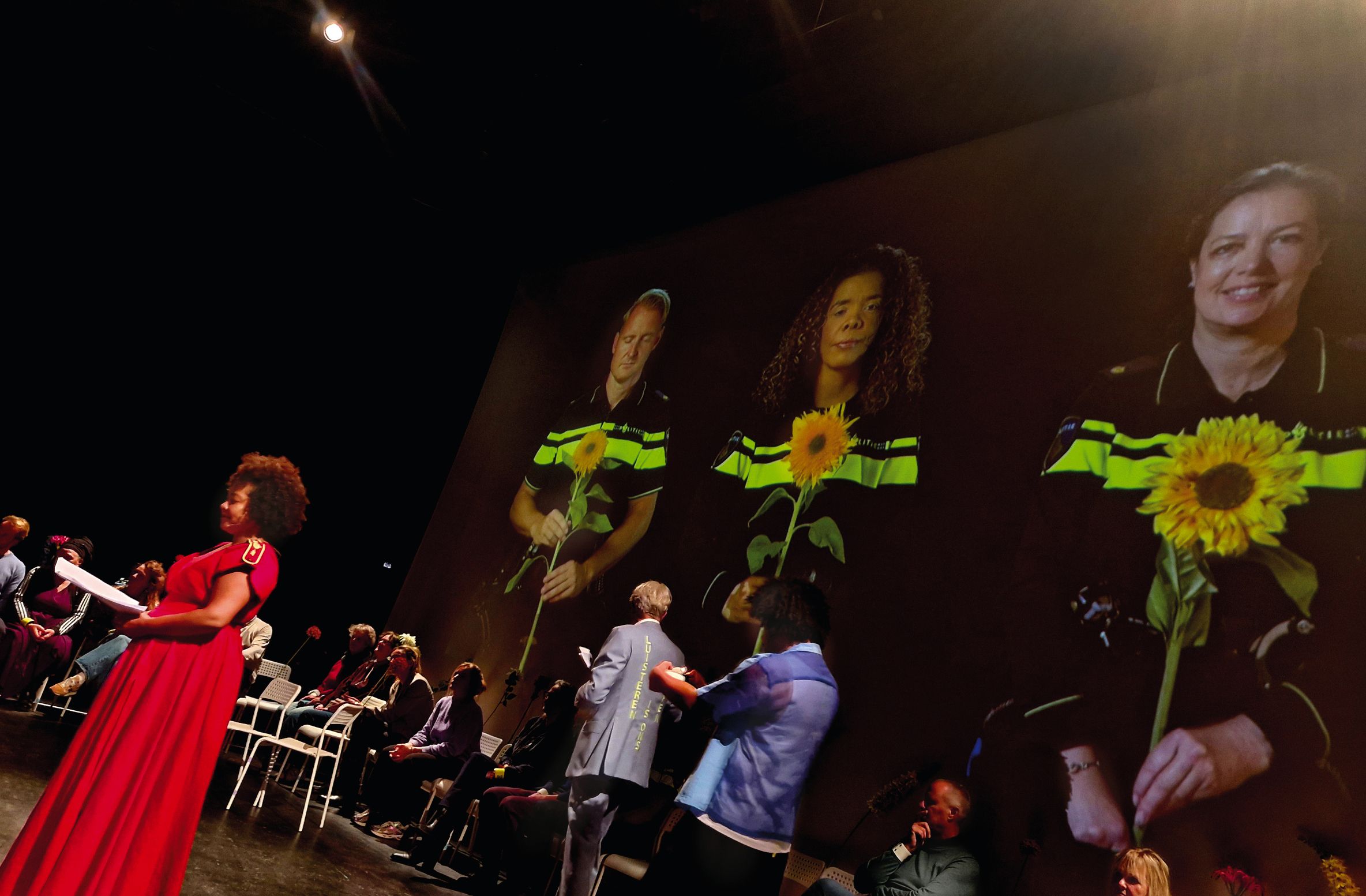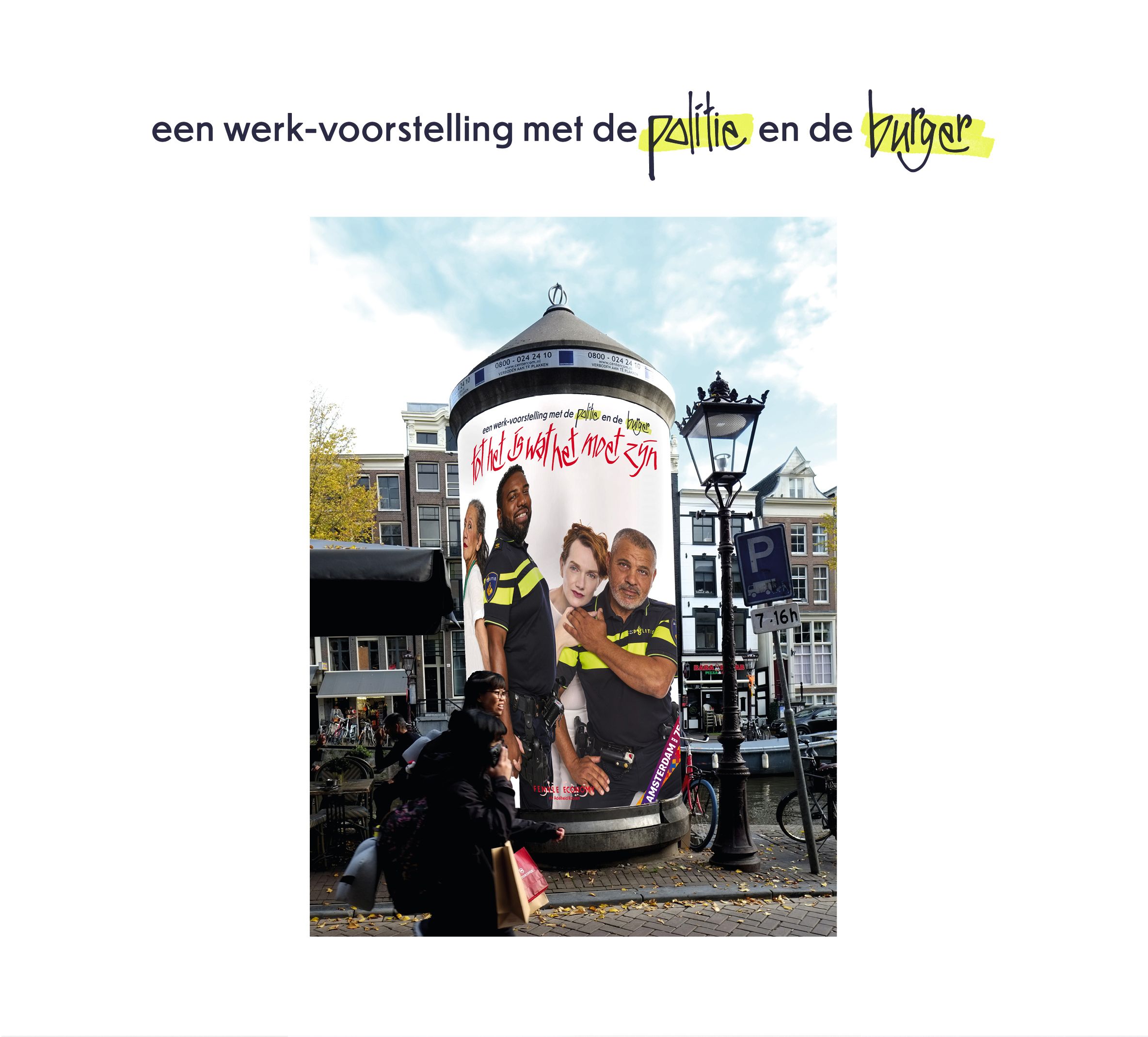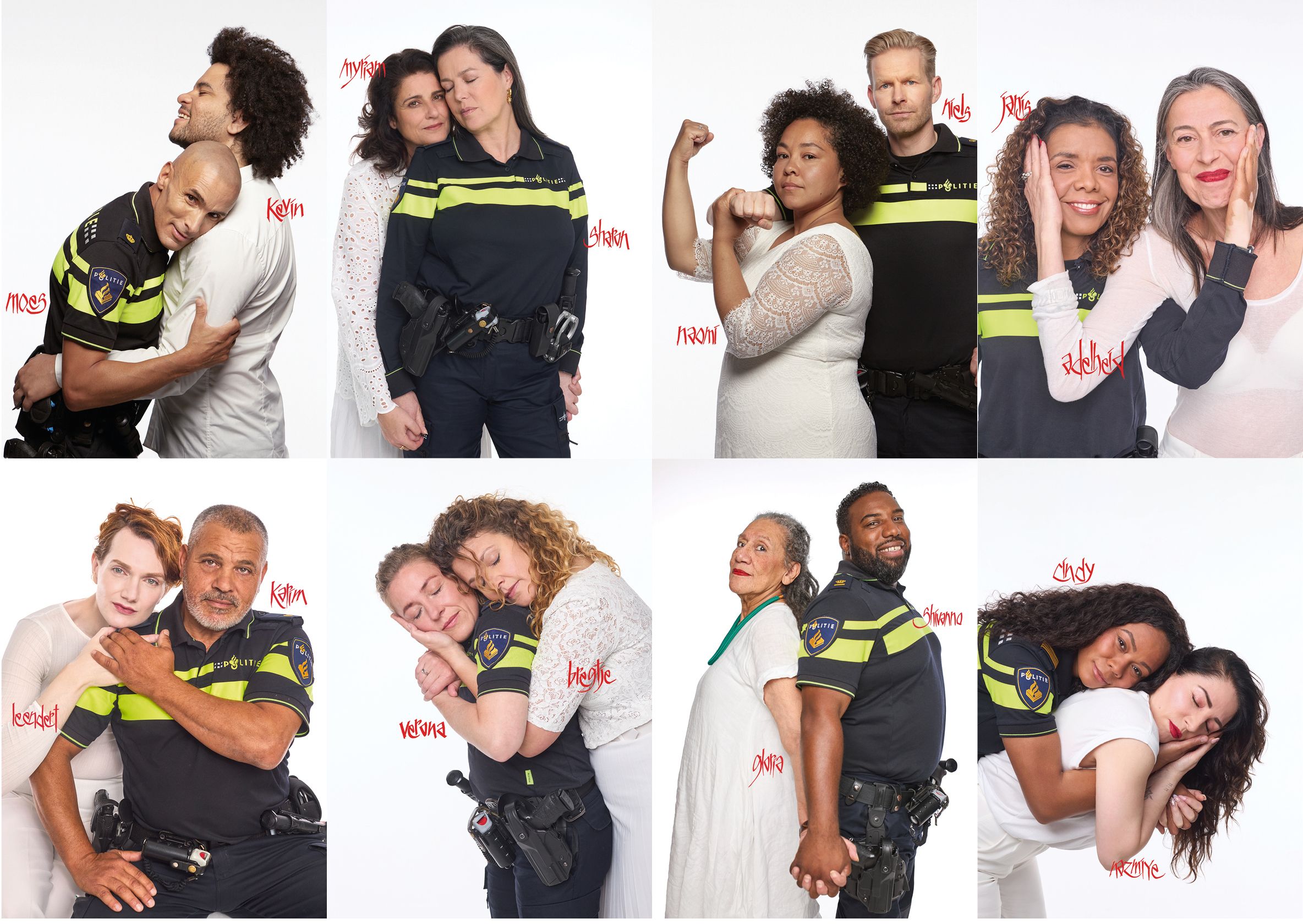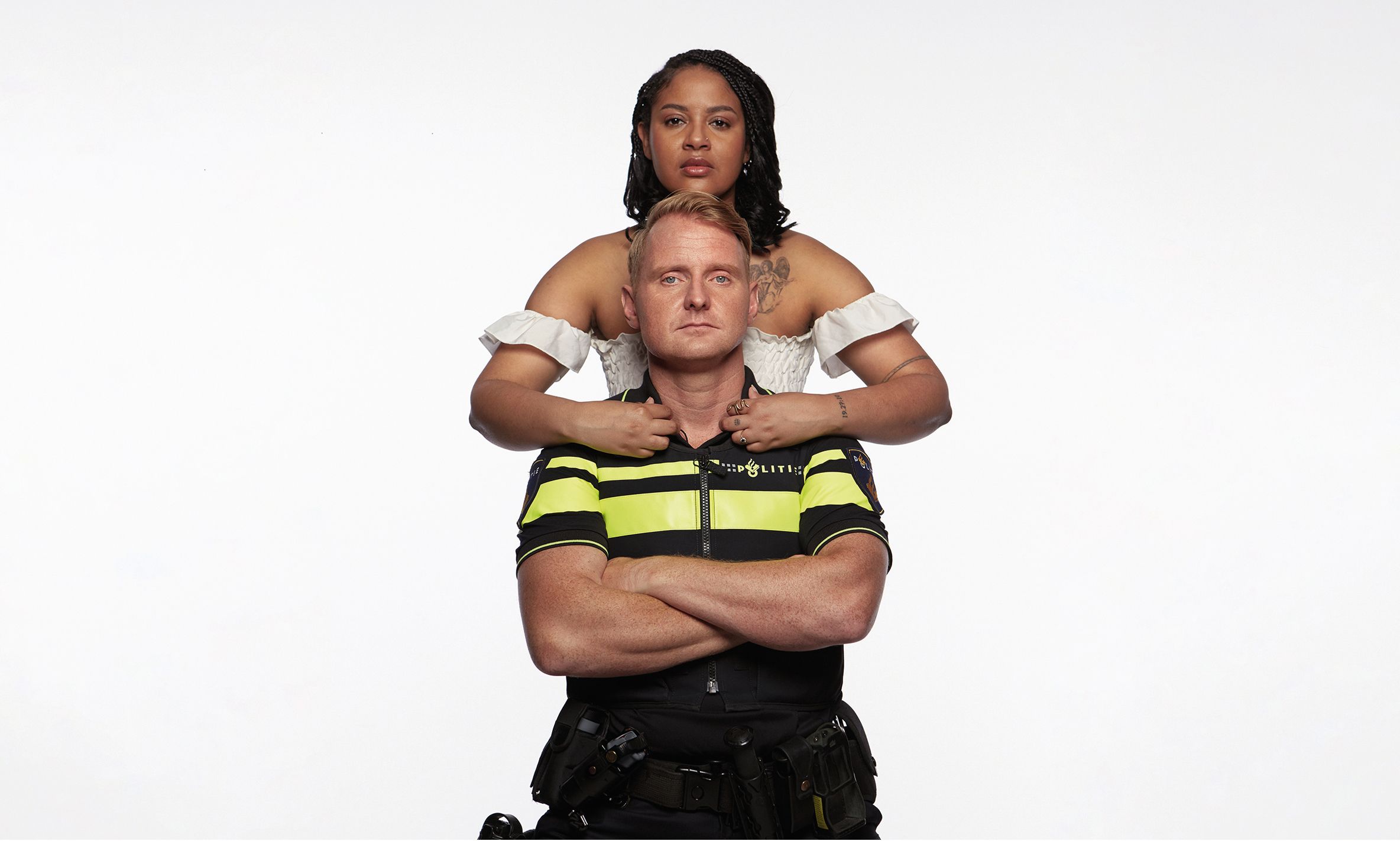
Until It Becomes What It Must Be (Tot het is wat het moet zijn) is a collaborative initiative between Female Economy and the Amsterdam Police, developed in response to concerns around discrimination, bias and public trust. The project brought sixty officers and sixty citizens into a series of structured encounters, work sessions and staged presentations designed to create space for reflection and dialogue.
The work aimed to support three parallel needs:
– acknowledging the experiences of citizens
– opening internal conversations on behaviour and attitude
– improving the organisation’s ability to communicate transparently about sensitive issues
Beyond the group directly involved, the police needed a way to signal openness, empathy and a willingness to address sensitive issues. This required a communication approach capable of reaching the wider public. Not only those attending the work presentations, but anyone encountering the project in the city or online.
The sessions generated extensive material: testimonies, quotes and recurring themes. To make this legible and accessible, the project needed a visual and editorial structure that could convey the tone of the work without overstating it, and translate a complex process into clear and restrained communication with fast understanding and high impact in public space.
With a collaboratively developed concept, Lopezlab shaped the visual and editorial framework that defined how the project appeared in public space and online. The system brought coherence to all elements (portraits, statements, posters, street-level applications and digital assets) resulting in a controlled and empathetic presentation of the encounters.
Rather than a traditional promotional campaign, the visual strategy made the underlying process visible to the wider public, signalling a police organisation willing to listen and contributing to a broader conversation about trust, behaviour and the relationship between the police and the city.
